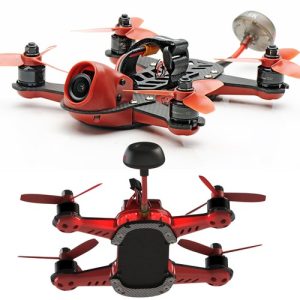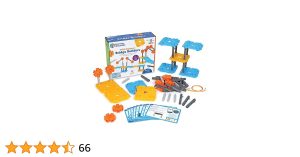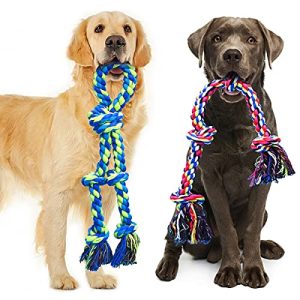Have you ever wished learning about the brain could be fun and hands-on? A brain model toy for students might be exactly what you need.
Imagine holding a colorful, detailed brain in your own hands, seeing how each part connects and works. This isn’t just a toy—it’s a powerful tool that can make complex ideas simple and exciting. If you want to boost your understanding and remember what you learn longer, keep reading.
You’re about to discover how this clever model can change the way you study and explore the amazing world inside your head.
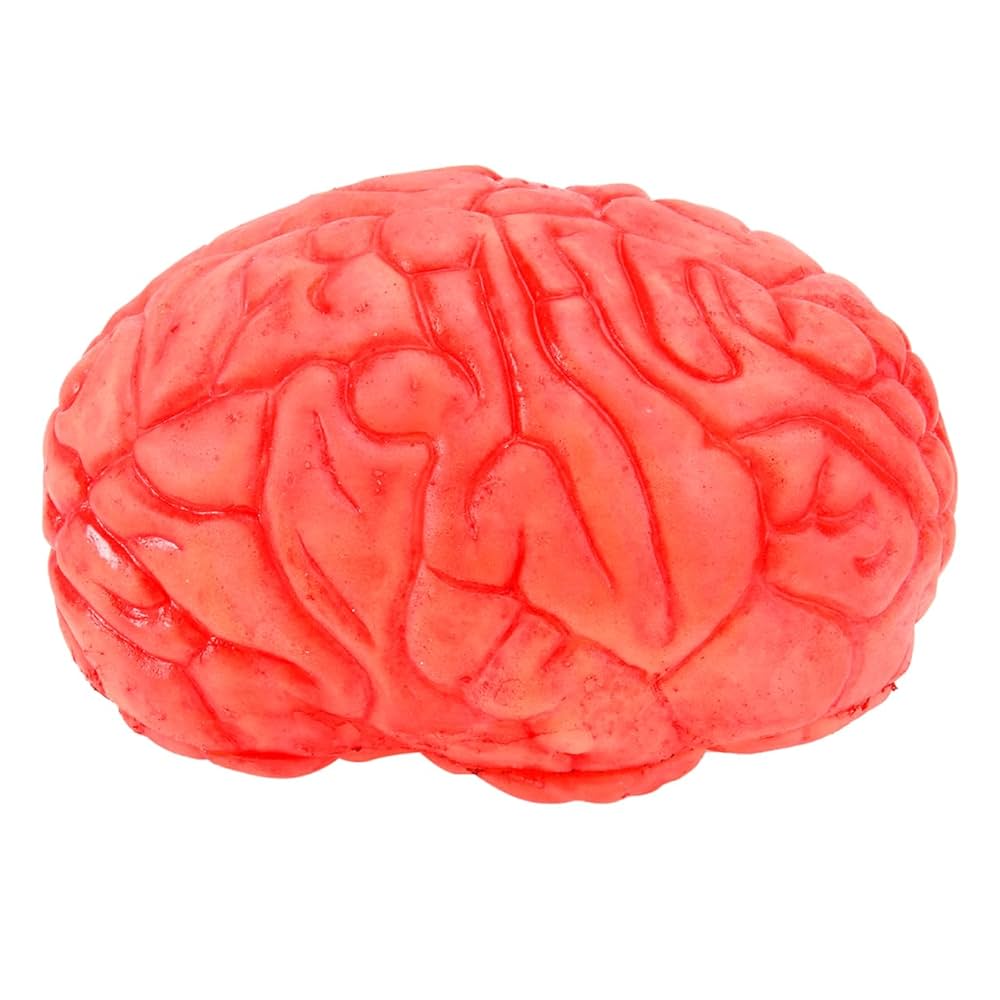
Credit: www.amazon.com
Benefits Of Brain Model Toys
Brain model toys help students learn about the brain in a fun way. They make complex ideas easier to understand.
Using these toys, students can see how the brain works. This hands-on tool supports better learning and interest.
Enhancing Memory Retention
Brain model toys help students remember information longer. Seeing and touching the parts of the brain improves memory.
These toys make learning active, which helps the brain store knowledge better than just reading or listening.
Stimulating Curiosity And Creativity
Brain models spark students’ curiosity about how the brain works. They invite questions and encourage exploring new ideas.
Playing with the models can inspire creative thinking about brain functions and human behavior.
Supporting Hands-on Learning
Hands-on learning helps students understand better and stay focused. Brain model toys let students touch and explore brain parts.
This active involvement makes lessons more interesting and helps students connect ideas more clearly.
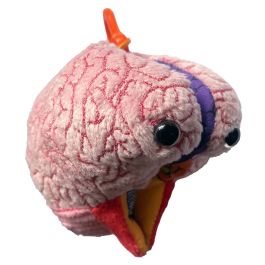
Credit: www.giantmicrobes.com
Types Of Brain Model Toys
Brain model toys help students learn about the human brain. They come in many types. Each type shows the brain in a different way.
These toys make studying fun and easy. Students can touch, build, or even see the brain in 3D with these models.
Anatomical Brain Models
Anatomical brain models show the real shape and parts of the brain. They are often made of plastic or rubber. Students can see areas like the cerebrum, cerebellum, and brainstem.
These models can be taken apart to study each section closely. They help students learn brain parts by sight and touch.
- Detailed parts with labels
- Removable sections for hands-on learning
- Used in classrooms and labs
Puzzle-based Brain Toys
Puzzle-based brain toys let students build the brain piece by piece. These puzzles can be 3D or flat. They help improve memory and understanding of brain structure.
Students learn by fitting pieces together. This type of toy is fun and helps with problem-solving skills.
- 3D puzzles with brain parts
- Flat puzzles with brain diagrams
- Boosts critical thinking
Augmented Reality Brain Models
Augmented reality (AR) brain models show a 3D brain using a tablet or phone. Students can see the brain from all sides. They can zoom in and rotate the model.
AR models make learning interactive. Students can explore brain functions and parts in a virtual way.
- Use devices like tablets or smartphones
- Interactive and 3D view
- Shows brain functions and parts
Choosing The Right Brain Model
Brain model toys help students learn about the brain in a fun way. Picking the right model can make studying easier and more interesting.
There are many types of brain models. You should think about age, learning goals, and safety before buying one.
Age Appropriateness
Choose a brain model that fits the student’s age. Younger kids need simple and big pieces. Older students can use detailed models with many parts.
A model too complex for a young child can cause frustration. A simple model may bore older students who want more detail.
Educational Value
Pick a brain model that matches the learning goals. Some models show only basic parts. Others include detailed anatomy like nerves and blood vessels.
Models with removable parts help students explore each brain section. This hands-on approach supports better understanding.
- Basic models show main brain sections
- Advanced models include detailed parts
- Removable pieces encourage interactive learning
Durability And Safety
Look for brain models made from strong, non-toxic materials. Students will handle them often, so durability matters.
Check for smooth edges and secure parts to avoid injury. Models should meet safety standards for children’s toys.
- Use non-toxic plastics or rubber
- Ensure parts fit tightly and do not break easily
- Avoid sharp edges or small choking hazards

Credit: www.ebay.com
Incorporating Brain Models In Study Routines
Using brain model toys helps students learn about the human brain. These models make studying more hands-on and clear.
Students can see parts of the brain and how they connect. This helps them remember details better than just reading.
Interactive Study Sessions
Brain models allow students to touch and explore brain parts during study time. This makes learning active and fun.
Students can label parts or quiz themselves by pointing to different sections. This helps improve focus and memory.
- Identify lobes and their functions
- Practice naming brain parts aloud
- Use the model to explain ideas to yourself
Group Learning Activities
Brain models encourage teamwork among students. They can share the model and discuss what each part does.
Groups can take turns explaining parts or create quizzes for each other. This builds communication skills and understanding.
- Take turns pointing out brain parts
- Ask questions to test group knowledge
- Discuss how parts control body functions
Project-based Applications
Students can use brain models for projects on brain health or diseases. This makes projects clearer and more real.
They can build presentations or posters showing brain parts and their roles. Using the model helps explain ideas better.
- Create diagrams with model guidance
- Explain brain functions in projects
- Show effects of injuries on brain parts
Feedback From Students And Educators
The brain model toy helps students learn about the human brain in a fun way. Educators say it makes lessons more hands-on and clear.
Students enjoy using the model because it shows how different parts of the brain work together. This feedback guides us to improve the toy for better learning.
Improved Engagement
Students pay more attention during lessons when they use the brain model toy. It helps them stay curious and ask questions.
- Hands-on activity keeps students focused
- Visual and tactile learning supports many styles
- Group work with the model encourages teamwork
- Teachers notice higher class participation
Better Conceptual Understanding
Educators report that students understand brain functions more clearly. The model shows the parts and their roles in a simple way.
| Brain Part | Function | Student Feedback |
| Frontal Lobe | Decision making | Easy to remember |
| Occipital Lobe | Vision | Helps me see how it works |
| Cerebellum | Balance and coordination | Fun to explore |
Encouraging Lifelong Learning
Both students and educators feel the toy sparks interest in science beyond the classroom. It motivates students to learn more on their own.
Reasons students like the brain model toy for lifelong learning:
- It makes science less scary and more fun.
- Students use it to explain brain parts to family and friends.
- It builds confidence to explore other science topics.
- Teachers see curiosity grow in class discussions.
Where To Find Quality Brain Model Toys
Brain model toys help students learn about the human brain. They show the different parts and how they work together.
Finding quality brain model toys can be easy if you know where to look. Here are some great places to start your search.
Online Marketplaces
Online marketplaces have many brain model toys. They offer a wide range of prices and styles.
Some popular online stores include Amazon, eBay, and Etsy. These websites have reviews to help you choose the best toy.
- Amazon: Known for fast shipping
- eBay: Find new and used models
- Etsy: Unique and handmade options
Educational Stores
Educational stores focus on learning tools for students. They often carry high-quality brain model toys.
Stores like Lakeshore Learning and Learning Resources are good places to find these educational toys.
- Lakeshore Learning: Offers in-store workshops
- Learning Resources: Known for educational tools
Diy Brain Model Kits
DIY brain model kits let students build their own models. This can be a fun and educational activity.
These kits often include all the parts needed to create a brain model. They are available online and in educational stores.
- Encourages hands-on learning
- Teaches about brain structure
- Available in different difficulty levels
Frequently Asked Questions
What Is A Brain Model Toy For Students?
A brain model toy is a 3D educational tool. It helps students understand brain anatomy and functions visually and interactively. It enhances learning by making complex concepts simple and engaging.
How Does A Brain Model Toy Benefit Students?
It improves memory and comprehension of brain structures. Students learn through hands-on experience, which boosts retention. It also encourages curiosity and interest in neuroscience and biology.
Are Brain Model Toys Suitable For All Age Groups?
Yes, brain model toys come in various complexity levels. They are designed for children, teens, and even college students. This makes them versatile for different educational stages and learning needs.
Can Brain Model Toys Aid In Science Projects?
Absolutely, these toys provide a practical demonstration of brain parts. They help students explain concepts clearly in presentations and reports. This makes science projects more interactive and impressive.
Conclusion
A brain model toy helps students learn about the human brain clearly. It shows different parts in a simple way. Students can touch and see to understand better. Such toys make studying fun and easy. They also support memory by making lessons active.
Using this tool in class or at home brings knowledge alive. It builds curiosity and interest in science. Choosing a brain model toy is a smart step for young learners. It makes learning real and enjoyable. A great aid for any student curious about how the brain works.



